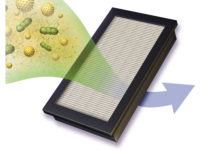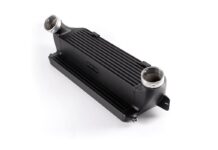Embedded systems are an integrated system of hardware and software, in layman language. But this dedicated computer system is also designed to work for some specific functions within a larger system. For instance, the gadgets we use every day including mobile phones, washing machines, microwave ovens and ATMs have a computer system embedded in them.
But, this amazing software is much more than that. There are a lot of benefits that the embedded systems have to offer.
Performance
The embedded systems are designed to perform various functions. However, the systems developed to undertake a single nature of tasks are way more reliable and prompt. On the other hand, in the systems developed to engage in more convoluted tasks, the performance is determined upon the power of software programming and the hardware component attached to it.
In short, one operating system is dedicated to one device. Therefore, performance is good and there is less use of resources like memory and microprocessors.
Ease of Use
Using and managing devices with embedded systems is extremely easy. These little-set-ups can help us in a variety of things ranging from cooking to controlling traffic lights. Since the hardware is simple, the functioning is also effortless.
Today, almost all the jobs are done with the help of a particular machine. How do you think these machines function? Well, if we look at a washing machine, all we have to do is press a few buttons and the task is done. That’s how easy life has become with embedded systems.
Size
The size of embedded systems is compact. Surprised? Well, look at how large a regular computer used to be. But, today, we can hold it in our hands, carry it anywhere and perform multiple functions with it anytime.
Since they are smaller in size, they have cheap maintenance. Additionally, they are very fast and take up very less time in loading. Moreover, the small size means less power consumption and hence are cost-effective.
Cost-Effective
The material used in the manufacture of this operating system is cheap and that’s what makes it cost-effective. Embedded system is made with modern-day elements like RAM, ROM, processor, wifi chips, motherboard, etc. As all these are made of semiconductor material, they tend to consume less power.
However, due to the inbuilt complexities, it is impossible for a layman to perform its diagnostics. A specialist engineer is needed to keep it maintained. This maybe just a one off but for companies that use embedded systems integrated into their business it may well be worth hiring an electronics engineer on a permanent basis. But the bottom line is that embedded systems will help you save a lot of energy as well as money on the bills after they are installed.
Practice Use
Look around yourself, and you will find that you are surrounded by dozens of embedded systems. From domestic to industrial purposes, there is a dire need of this software to keep things functioning properly.
There are embedded systems in mobile phones, internet routers, or laptops that help us communicate. Besides, all the sources of entertainment including televisions and cameras also have embedded system chips. Apart from that, it is used in navigation, music systems, braking systems in automobiles.
Final Words
You don’t have to go so far to look for an embedded system. It’s right there with you and all around you. And surprisingly, we fail to notice what a blessing this innovation really is. With loads of benefits and functions, embedded systems have made our life very easy and trouble-free in an inexpensive way.








